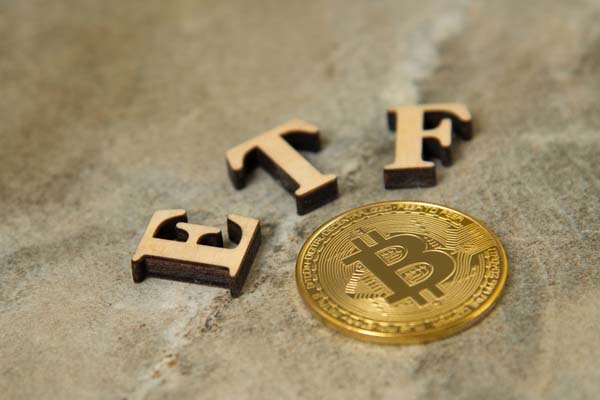More and more people are becoming interested in investing in bitcoin. This is due to both the effectiveness of this coin as well as its unparalleled growth. The only thing lacking from Bitcoin is the inability to invest in it using conventional or classic financial products.
After several years of discussions, Bitcoin was eventually given permission to be linked to a conventional financial product. The Securities and Exchange Commission (SEC), the watchdog of the American stock market, authorized ProShares to advertise an ETF/Bitcoin product in 2019. This ETF, known as ProShares Bitcoin Strategy, has been accessible since October 19, 2021.
Since that time, a number of funds have made it easy to buy Bitcoin via an ETF. Understanding an ETF and how it functions as well as the ETF/Bitcoin and its benefits are prerequisites for investing in an ETF/Bitcoin product.
An ETF is what?
Exchange Traded Funds, or “Fonds Négociés en Bourse” in French, are known by the acronym “ETF.” A fund that matches the price of an underlying asset is what it actually is. The latter can be either a bond, a commodity, or an activity. Therefore, in theory, any asset listed on one of the numerous global stock exchanges may be used as the underlying asset in an ETF.
This suggests that when a shareholder purchases an ETF, he is not purchasing the underlying asset. Only the asset whose price the ETF replicates is tracked by the investor.
ETFs are a modern innovation in finance. The first ETF, Tips35, first appeared in the 1990s. Since then, there has been a worldwide explosion in the use of ETFs. According to Statista, there were 6970 ETFs on the market in 2019. In 2021, this number rises to 8,552 ETFs. Today, it has already been largely surpassed.
How is an ETF operated?
An ETF’s operation is rather straightforward. It affixes to an asset in the financial market and mimics its development. There are two ways to replicate this. It may be natural or artificial.
In the US, physical duplication is more prevalent. In Europe, synthetic replication is more frequently utilized. A small handful of issuers are responsible for almost all of the ETFs that are currently on the market. These final are
- Valiant Group
- Chuck Schwab
- SPDR
- Energy Shares
- Ishares.
The most well-known ETF when it comes to cryptocurrencies and ETFs is the one for Bitcoin.
How does a Bitcoin/ETF operate?
You must first understand what a Bitcoin ETF is before examining how it functions.
The Bitcoin ETF is an ETF that tracks the price of Bitcoin and uses it as its underlying asset. Futures contracts traded on the stock exchange are used for this. Therefore, having a Bitcoin ETF does not imply having Bitcoin.
Like other ETFs, the Bitcoin ETF operates similarly. The owner of this ETF wagers on the upward or downward movement of the price of Bitcoin. The Bitcoin ETF functions specifically as follows:
- Step 1: The owner of a Bitcoin establishes an ETF that replicates the value of the Bitcoin that it owns.
- Step 2: The owner of the Bitcoin sells the ETF to market participants.
- Step 3: Investments are set up to rise or fall in tandem with the price of Bitcoin.
There may be benefits and drawbacks to this investment.
What are an ETF’s and Bitcoin’s benefits and drawbacks?
Benefits of ETFs linked to Bitcoin include:
- Accessibility: With this investment strategy, anyone can use Bitcoin.
- Variety of assets: Having another underlying asset in addition to a Bitcoin ETF is an advantage.
Management costs: Despite being greater than those of an ETF based on a stock market index, a Bitcoin ETF nevertheless has lower management costs due to its management being largely passive.
The characteristics of Bitcoin are related to the drawbacks of a Bitcoin ETF:
- The underlying asset’s volatility: Cryptocurrencies in general are extremely volatile, and sudden, erratic changes can result in significant losses.
- Accessibility: ETFs are not yet available in all nations, including France.
- Diversity in this context refers to the variety of cryptocurrencies that can be added to an ETF. True, there aren’t many.
How do I invest in an ETF or Bitcoin?
You must invest internationally in a Bitcoin ETF. Since France prohibits access to this financial instrument, it must be completed on a foreign platform that does. You must follow all the registration-related procedures to the letter in order to do this.
You will then need to deposit money into your account in a chosen amount. the next step is to buy Bitcoin ETFs. Keep in mind that there is risk involved with any investment. You can still generate decent gains if you don’t take any excessive holdings.



